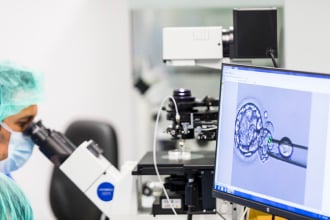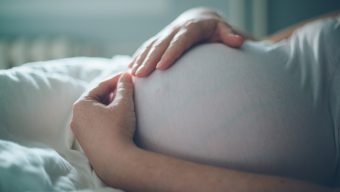

The term low responder is used for patients whose ovaries do not respond well to gonadotropin stimulation. In patients diagnosed as low responders, the limited number of oocytes is considered to be the main problem in optimising newborn rates. As a result of the low number of oocytes obtained, the patient has fewer embryos to select and transfer, which decreases her chances of achieving pregnancy compared to patients who respond well to ovarian stimulation.
The incidence of low responders ranges from 9-24%, although in the coming years this range is expected to increase due to the direct influence of age on ovarian responsiveness as more and more women delay maternity.

With the aim of offering a final treatment alternative to women who want to become mothers with their own eggs, we have created the first Centre of Excellence focused on Ovarian Rejuvenation in the city of Alicante. Our experience in the management of highly complex reproductive cases, combined with our constant research work, has allowed us to develop and implement the most advanced techniques in Reproductive Medicine to offer new treatment options to this population of women.


Vitrification allows the accumulation of oocytes from different cumulative cycles, so that all potential transfers are concentrated in one cycle. This technique is associated with a lower cancellation rate, a higher cumulative newborn rate and cycles with a higher number of frozen embryos, all of which supports this treatment as a successful alternative for low responder patients.


Although the main factor is the decrease in ovarian reserve (which is related to age), there are other causes that can lead to a low response to ovarian stimulation treatments and that can have an impact on oocyte quality and the percentage of aneuploid oocytes.
In cases where a low ovarian response and advanced maternal age are combined, our treatment solution is the accumulation of oocytes together with pre-implantation genetic testing (PGT-A) in which we will discard chromosomally abnormal embryos.


Double stimulation protocol plus preimplantation genetic testing treatment in which the aim is to obtain a greater number of biopsiable embryos. This solution allows us to shorten the time required to achieve pregnancy. We utilise the characteristics of double stimulation to obtain more embryos in the same treatment cycle.

Although low ovarian reserve can be a problem when it comes to gestation, we currently have different treatment solutions that increase the chances of achieving pregnancy with your own oocytes, such as oocyte accumulation and/or the double stimulation protocol.
Among the known causes of low ovarian reserve, smoking, endometriosis, previous ovarian surgery, exposure to toxins and chemotherapy and radiotherapy treatments have been described. There is also sometimes a clear familial genetic component. In most cases, low ovarian reserve is the result of a combination of environmental and genetic factors.


IVI, is a leading reproduction medicine centre, offering the best fertility treatments and techniques in Spain, both to Spaniards as to foreign patients.
At our fertility clinics in Madrid, Valencia, Barcelona, Málaga, Benalmádena, Bilbao, Saint Sebastian, Las Palmas, Seville, Mallorca and Alicante, we have medical specialists trained to care for patients in English, French, Italian and German, thus breaking the language barrier.


